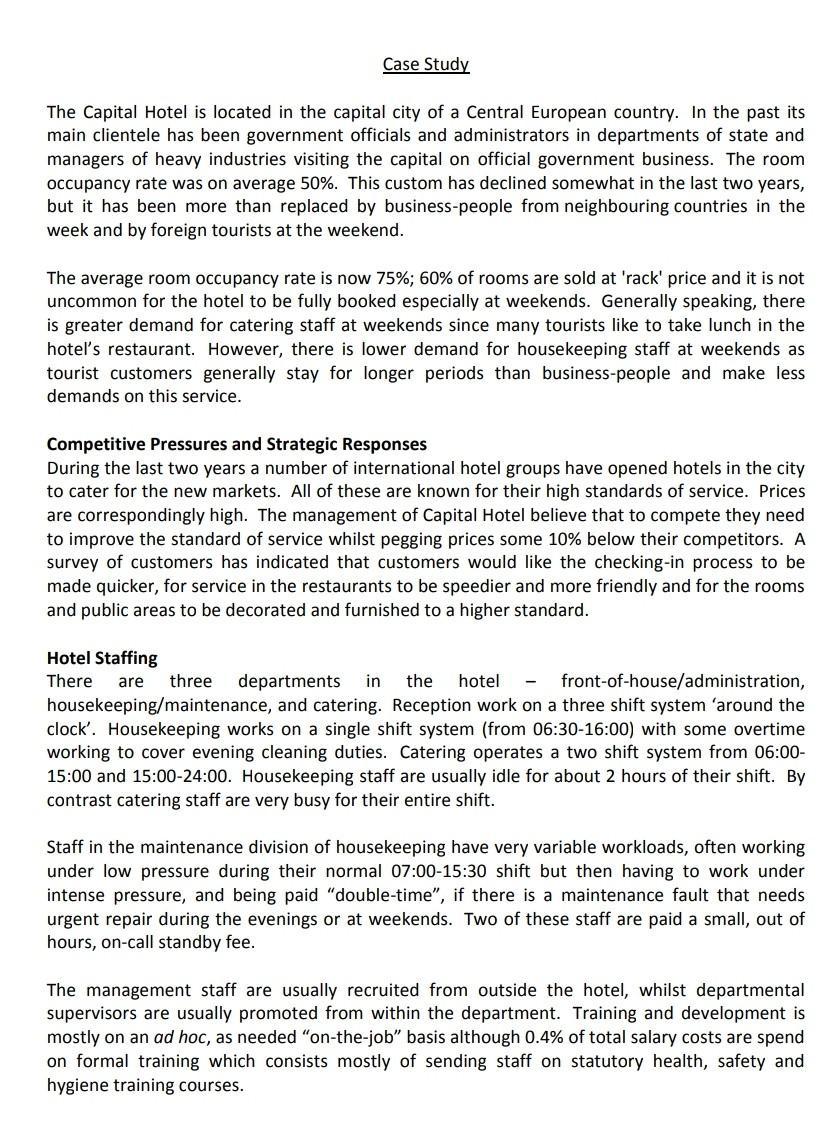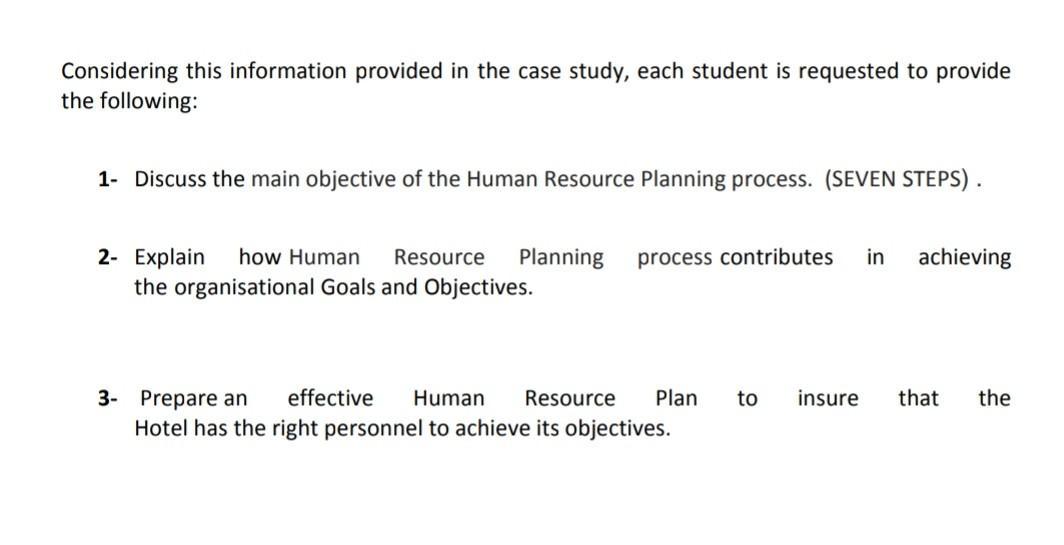Answered step by step
Verified Expert Solution
Question
1 Approved Answer
Case Study The Capital Hotel is located in the capital city of a Central European country. In the past its main clientele has been


Case Study The Capital Hotel is located in the capital city of a Central European country. In the past its main clientele has been government officials and administrators in departments of state and managers of heavy industries visiting the capital on official government business. The room occupancy rate was on average 50%. This custom has declined somewhat in the last two years, but it has been more than replaced by business-people from neighbouring countries in the week and by foreign tourists at the weekend. The average room occupancy rate is now 75%; 60% of rooms are sold at 'rack' price and it is not uncommon for the hotel to be fully booked especially at weekends. Generally speaking, there is greater demand for catering staff at weekends since many tourists like to take lunch in the hote's restaurant. However, there is lower demand for housekeeping staff at weekends as tourist customers generally stay for longer periods than business-people and make less demands on this service. Competitive Pressures and Strategic Responses During the last two years a number of international hotel groups have opened hotels in the city to cater for the new markets. All of these are known for their high standards of service. Prices are correspondingly high. The management of Capital Hotel believe that to compete they need to improve the standard of service whilst pegging prices some 10% below their competitors. A survey of customers has indicated that customers would like the checking-in process to be made quicker, for service in the restaurants to be speedier and more friendly and for the rooms and public areas to be decorated and furnished to a higher standard. Hotel Staffing There are three departments in the hotel front-of-house/administration, housekeeping/maintenance, and catering. Reception work on a three shift system 'around the clock'. Housekeeping works on a single shift system (from 06:30-16:00) with some overtime working to cover evening cleaning duties. Catering operates a two shift system from 06:00- 15:00 and 15:00-24:00. Housekeeping staff are usually idle for about 2 hours of their shift. By contrast catering staff are very busy for their entire shift. Staff in the maintenance division of housekeeping have very variable workloads, often working under low pressure during their normal 07:00-15:30 shift but then having to work under intense pressure, and being paid "double-time", if there is a maintenance fault that needs urgent repair during the evenings or at weekends. Two of these staff are paid a small, out of hours, on-call standby fee. The management staff are usually recruited from outside the hotel, whilst departmental supervisors are usually promoted from within the department. Training and development is mostly on an ad hoc, as needed "on-the-job" basis although 0.4% of total salary costs are spend on formal training which consists mostly of sending staff on statutory health, safety and hygiene training courses. Considering this information provided in the case study, each student is requested to provide the following: 1- Discuss the main objective of the Human Resource Planning process. (SEVEN STEPS). 2- Explain how Human Resource Planning process contributes in achieving the organisational Goals and Objectives. effective 3- Prepare an Hotel has the right personnel to achieve its objectives. Human Resource Plan to insure that the
Step by Step Solution
★★★★★
3.42 Rating (155 Votes )
There are 3 Steps involved in it
Step: 1
MAIN OBJECTIVES OF HUMAN RESOURCES PLANNING PROCESS The6se are the6 main objectives need to be noted ...
Get Instant Access to Expert-Tailored Solutions
See step-by-step solutions with expert insights and AI powered tools for academic success
Step: 2

Step: 3

Ace Your Homework with AI
Get the answers you need in no time with our AI-driven, step-by-step assistance
Get Started


